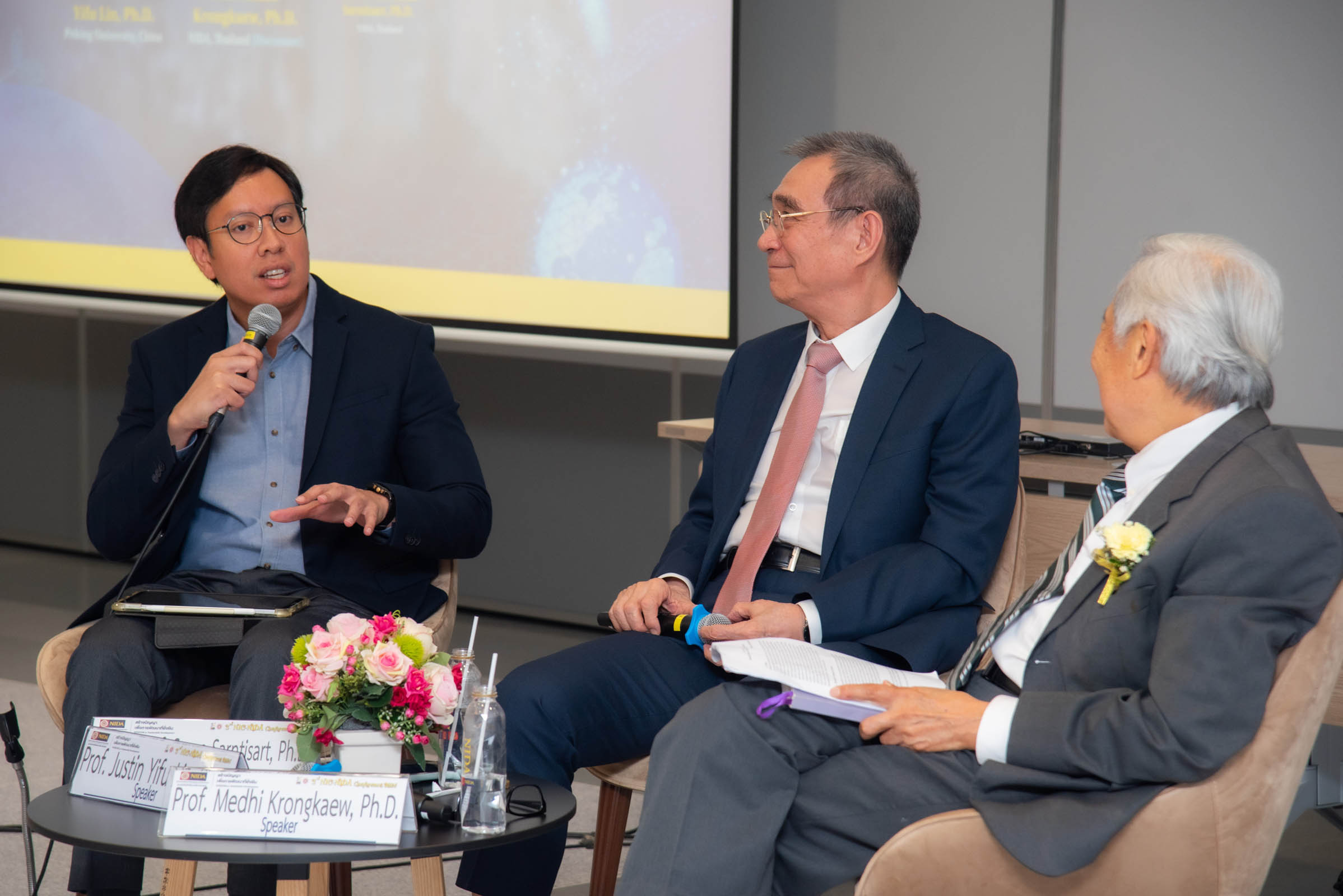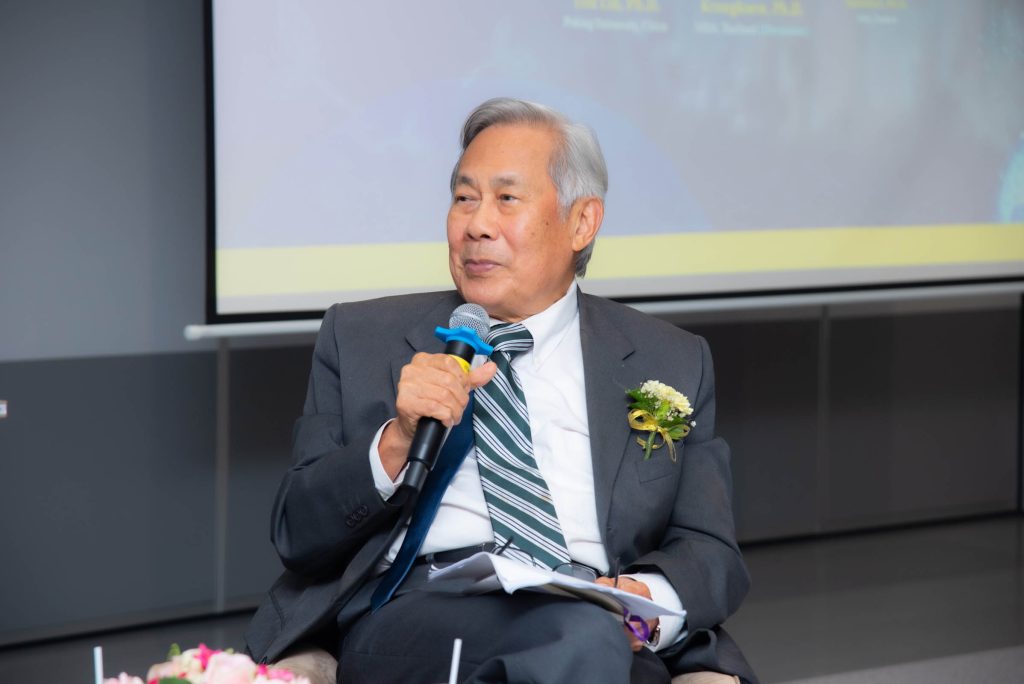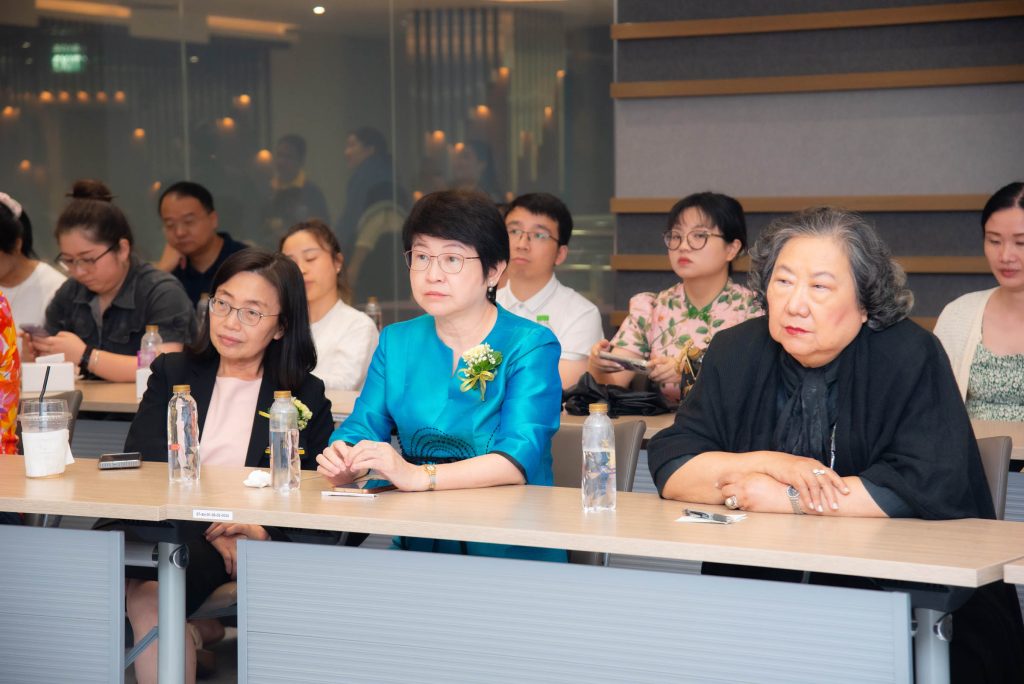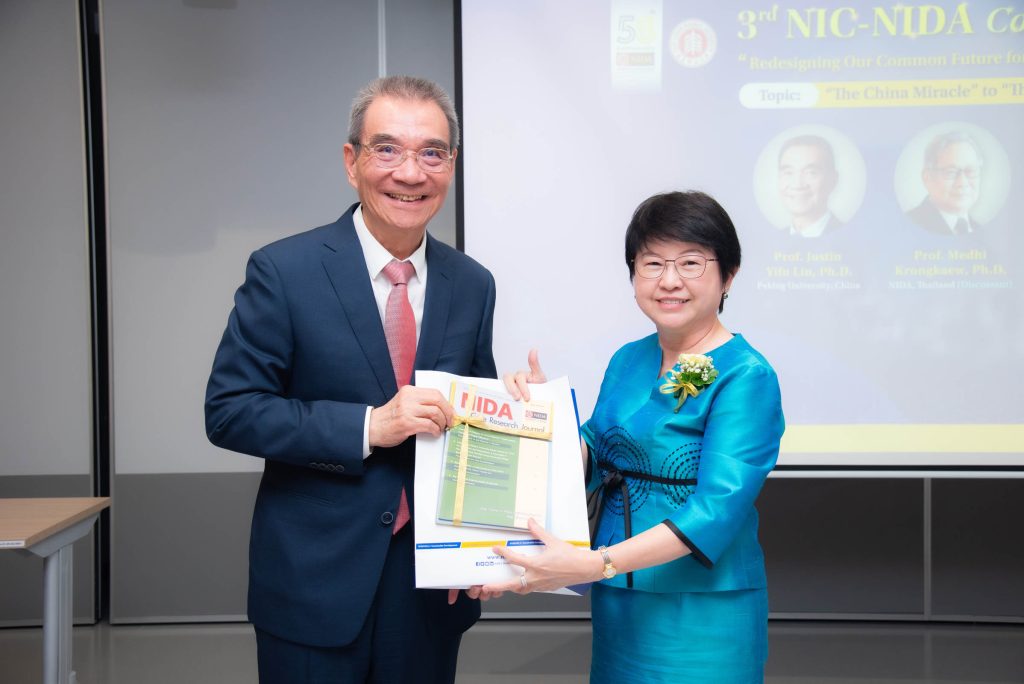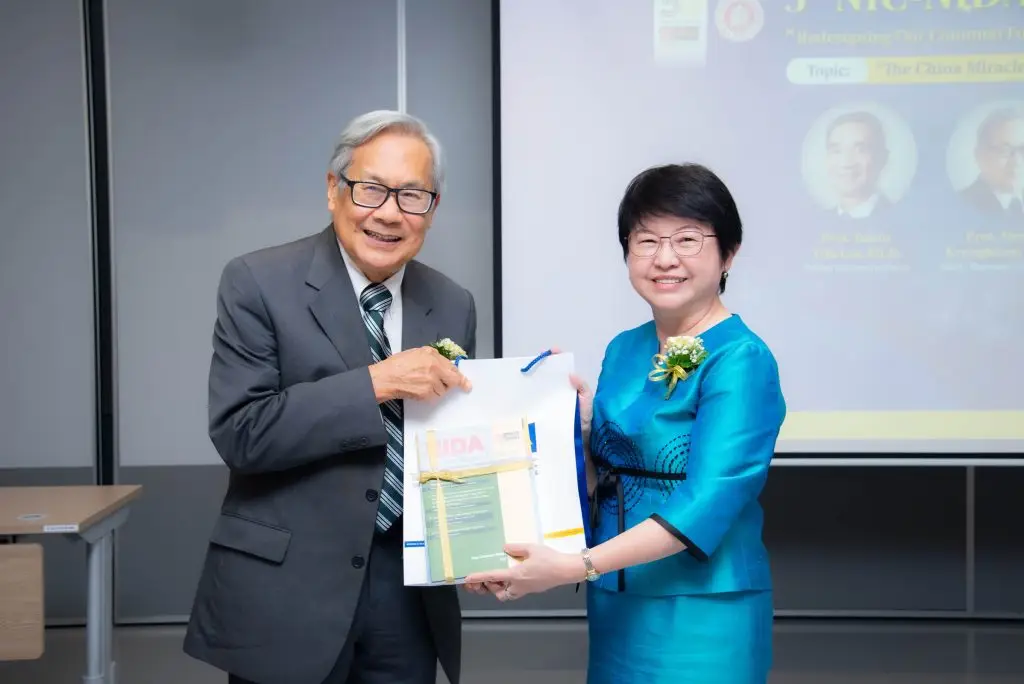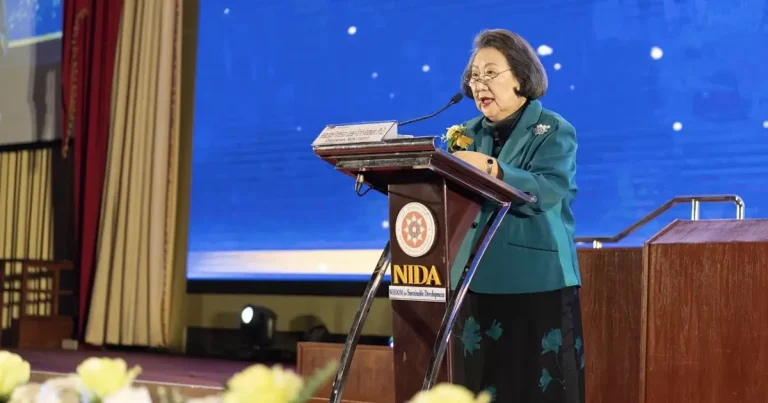By Prof. Justin Yifu Lin, Ph.D.
Peking University
Special Talk Summary by Assoc. Prof. Saran Sarntisart, Ph.D.
Graduate School of Development Economics, NIDA
On the 22nd of August 2024, a special talk titled “The China Miracle to the Quest for Prosperity” was held at the 2024 National and International Conference of the National Institute of Development Administration, featuring Prof. Justin Yifu Lin, former Chief Economist of the World Bank, Professor at Peking University, and author of The China Miracle and The Quest for Prosperity, and Prof. Medhi Krongkaew, member of Thailand’s Economic and Social Development Board, and prominent academic specializing in development economics. The event explored the economic strategies that led to China’s rapid development and the broader implications of these strategies for other developing countries seeking to achieve similar success. The talk focused on understanding the transformation of China’s economy and how lessons from this transformation could inform the development trajectories of other nations.
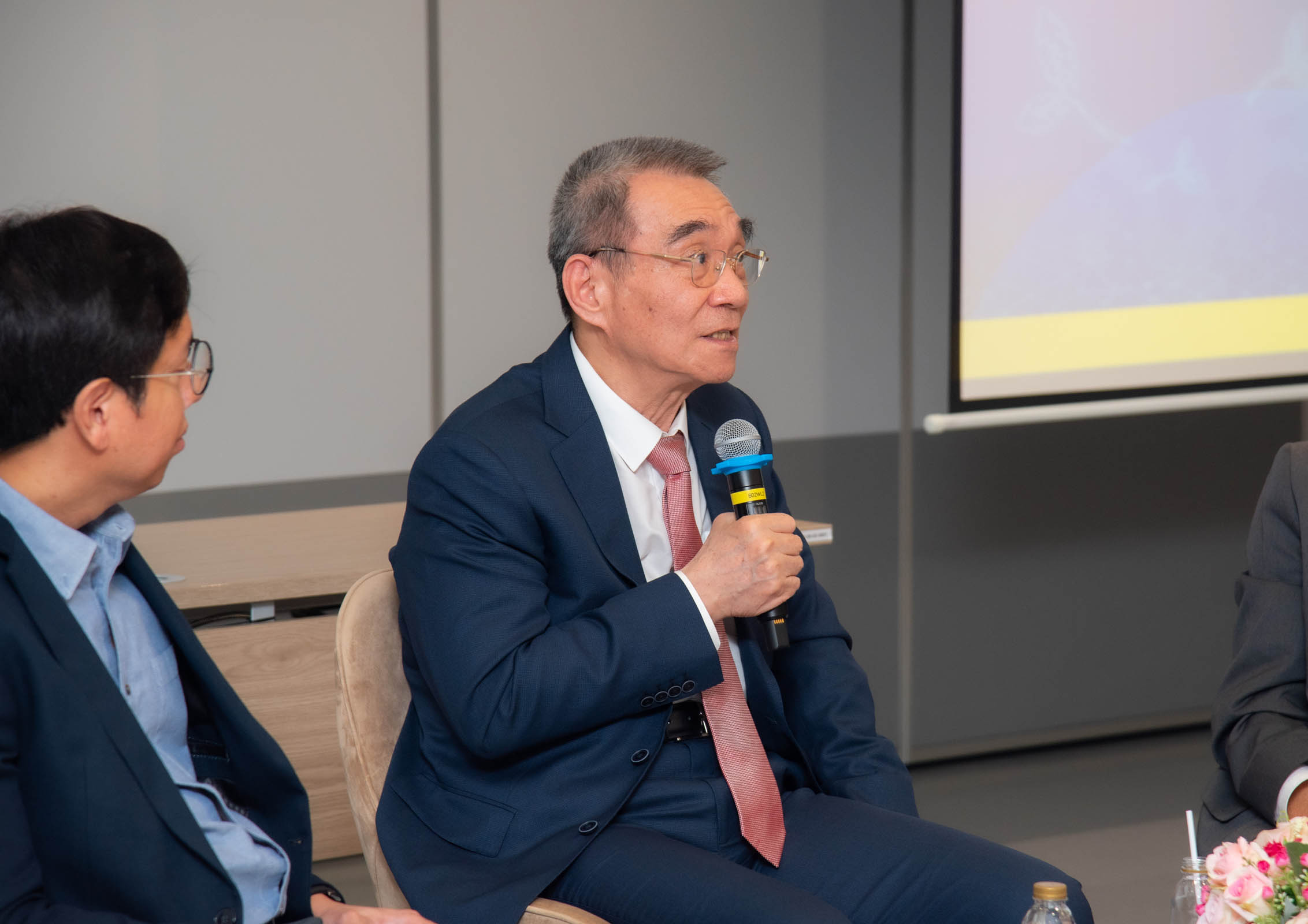
Prof. Lin began by discussing the concept of “The China Miracle,” a term used to describe China’s remarkable economic growth over the past four decades. He attributed this success to a series of pragmatic and context-specific reforms that aligned with China’s comparative advantages. Central to his argument was the idea that China’s adoption of a “comparative advantage-following” strategy, which emphasized labor-intensive industries during the early stages of development, was crucial in integrating China into the global economy and setting the foundation for its industrial expansion.
The speaker highlighted key reforms such as the establishment of special economic zones, which attracted foreign investment and technology. These reforms were characterized by their gradual implementation, allowing China to experiment on a smaller scale before rolling them out nationwide. This dual-track approach, blending planned economy elements with market-oriented reforms, was presented as a critical factor in China’s successful transition. He also emphasized on the importance of political stability for the continuity of policies and that, although the country faces challenges along the process of development, a focus for opportunities and continuous growth will eventually help solve the issues.
Moving from the China-specific context to broader development strategies, Prof. Lin introduced the concept of “New Structural Economics” (NSE), which he developed in his later work, The Quest for Prosperity. NSE advocates for a development strategy that is aligned with a country’s current factor endowments—such as labor, capital, and natural resources—and emphasizes the role of the state in guiding economic development. Prof. Lin argued that developing countries should not blindly follow the industrial paths of advanced economies but should instead focus on industries where they have comparative advantages at their current stage of development. As these countries grow and their factor endowments evolve, they should gradually shift to more capital- and technology-intensive industries.
Prof. Lin also addressed the role of globalization and international trade in development. He argued that by integrating into the global economy, developing countries could leverage their comparative advantages to attract foreign direct investment, acquire technology, and boost industrial upgrading. However, he cautioned against the premature liberalization of markets, which could expose economies to external shocks without the necessary domestic capabilities to manage such risks.
Moreover, Prof. Krongkaew further provided a critical analysis of Prof. Lin’s presentation, largely agreeing with the framework of New Structural Economics. At the heart of Professor Lin’s argument is the idea that economic development should not rely solely on market mechanisms. Instead, he promotes a strategy where governments in developing countries identify and support industries in which they have or can develop a comparative advantage. This state involvement may include providing necessary infrastructure, facilitating technology transfer, and creating favorable institutional conditions. Lin’s approach contrasts sharply with the classical laissez-faire economic perspective, which minimizes government intervention in favor of market-driven solutions.
A key takeaway theme is the concept of “turning points” in economic development—critical moments when strategic policy decisions significantly alter a country’s development trajectory. The contrasting experiences of China and Russia during the late 20th century are highlighted to illustrate the importance of these decisions. While China’s gradual and controlled reforms under Deng Xiaoping led to substantial economic gains, Russia’s rapid and poorly managed transition under Boris Yeltsin resulted in economic instability. In this regard, he highlighted the importance of leadership in determining the success of a country’s economic development.
Incorporating the discussion on Prof. Bruce Chapman, Prof. Krongkaew shares his innovative concept of income-contingent loans (ICLs), which has significantly influenced education and public finance policy. Chapman’s work is examined in the context of how targeted government interventions can address market failures, particularly in human capital development. His model, originally developed for Australia’s higher education system, allows students to finance their education through government-backed loans, with repayments tied to their future income levels. The system minimizes the financial risk for students and ensures that education is accessible regardless of socio-economic background. This draws parallels between Chapman’s approach and Lin’s NSE, suggesting that both emphasize the need for government action in areas where markets may fail to provide optimal outcomes, such as in education and industrial development.
Finally, the talk provided a comprehensive analysis of the factors behind China’s economic miracle and offered valuable insights into how other developing countries can craft their development strategies to achieve sustained growth. Prof. Lin presented a compelling case for the application of New Structural Economics as a flexible and adaptive framework, while Prof. Krongkaew provided a thoughtful critique, emphasizing the importance of context and the potential challenges that other nations might face in following China’s path.
The discussion concluded with a consensus on the need for tailored, context-specific development strategies that take into account a country’s unique factor endowments, governance capabilities, and social dynamics. Both the speaker and the discussant agreed that while China’s experience offers valuable lessons, each country must chart its own course to prosperity, informed by but not constrained by the experiences of others.
This special talk not only deepened the understanding of China’s economic transformation but also offered practical guidance for policymakers and development practitioners seeking to replicate similar success in their own countries. The event underscored the importance of pragmatic, evidence-based approaches to economic development and the critical role of the state in guiding and facilitating growth.
